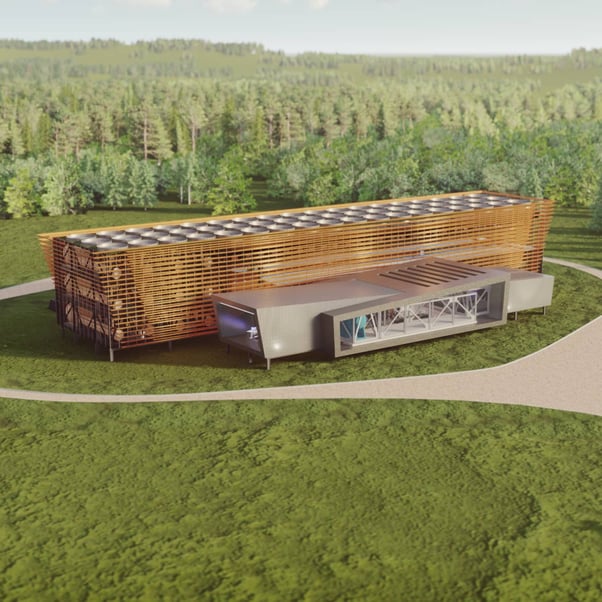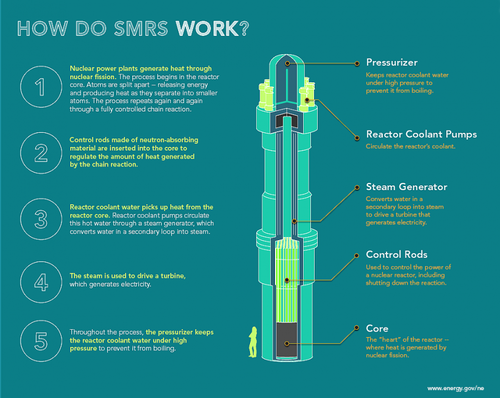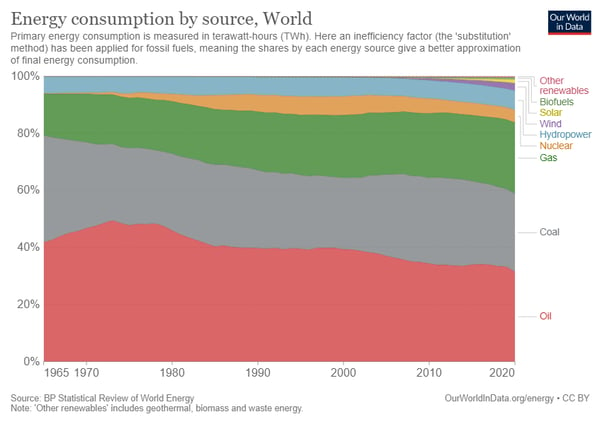Jack Colreavy
- Apr 4, 2023
- 5 min read
ABSI - Revolutionising Nuclear Power: The Promise of SMR Technology
Every Tuesday afternoon we publish a collection of topics and give our expert opinion about the Equity Markets.

There has been significant discussion on energy over the past decade as global economies attempt to move away from heavy carbon emitting fossil fuels to new technologies. Renewable energy technologies dominate the headlines but nuclear is starting to have a resurgence in interest due to the advent of SMR technology. Last Energy, a SMR technology provider, recently announced PPAs for 34 new nuclear power plants totalling US$18.9 billion in power sales. ABSI this week takes a closer look at nuclear SMR technology to assess the proposed risks and benefits.
The legacy power network is one of centralised scale but with changes in energy technology, that dynamic is shifting to a more decentralised network. A prime example of this trend are nuclear small modular reactors (SMR) which are an emerging nuclear technology that is typically characterised by being more flexible, affordable, and easier to deploy thanks to their much smaller size; as small as 20MW. SMRs have several potential advantages compared to traditional large-scale nuclear reactors, including:
- Flexibility - can be deployed in a variety of settings, such as remote locations, industrial facilities, and can be used to supplement or replace existing power sources.
- Safety - designed to incorporate passive safety features that can automatically shut down the reactor in the event of an emergency.
- Cost - are more cost-effective than traditional large-scale reactors because of their smaller size, simplified designs, and standardised modular construction, which reduces capital costs and speeds up deployment.
SMRs work on the same fundamental principle as traditional nuclear technology. The reactor core contains fuel rods made of a radioactive material, such as uranium or plutonium, which undergoes nuclear fission when struck by a neutron, releasing a large amount of heat. This heat is used to generate steam, which drives a turbine to produce electricity.
Source: DoE
The key difference between SMRs and large-scale nuclear reactors is in their size and design. There are also different types of SMRs, such as light-water reactors (LWRs), high-temperature gas-cooled reactors (HTGRs), and molten salt reactors (MSRs). These different types use different types of fuel and coolants and operate at different temperatures, which can affect their efficiency, safety, and waste production.
In major news for the industry, US-based nuclear SMR company Last Energy announced 4 power purchase agreements (PPAs) across 34 reactors in the UK and Poland totalling revenue of US$18.9 billion. Each reactor is 20MWe (60MWt) with a ~£100 million price tag, a 72-month fuel cycle, and occupies a plant footprint of 0.5 acres.
Last Energy 20MWe SMR:

Source: Last Energy
While these agreements help validate the strategy and technology, there still remain significant hurdles for them to come to fruition. The biggest being the fact that this technology remains untested in the real world and there isn’t regulatory approval for the reactors in the UK or Poland. Last hopes to help relieve some of these risks with the deployment of their first reactor in Texas by as early as 2025. There is also the question of cost and funding requirements of the 34 reactors - ~£3.4 billion representing a cost of ~£5,000 per kW before fuel costs. For comparison, utility-scale solar costs ~£800,000 per MW representing a cost of ~£800 per kW or ~500% less than nuclear.
Source: Wikipedia
Overall, SMR technology shows promise in addressing some of the challenges of traditional nuclear energy, but it is still a developing technology that faces several technical, regulatory, security, and economic hurdles. Ultimately, countries are looking for avenues to reduce their carbon footprint and nuclear SMRs are a viable low-carbon energy technology that has the potential to provide important baseload power generation to complement mainstream renewables. If governments are serious about their Paris 2050 commitments they need to support companies from a regulatory perspective to help lower the barriers to entry.
We offer value-rich content to our BPC community of subscribers. If you're interested in the stock market, you will enjoy our exclusive mailing lists focused on all aspects of the market.
To receive our exclusive E-Newsletter, subscribe to 'As Barclay Sees It' now.
Share Link




.png?width=767&name=Untitled%20(2).png)
.png?width=767&name=ABSI%20Thumbnail%20template%20(2).png)


